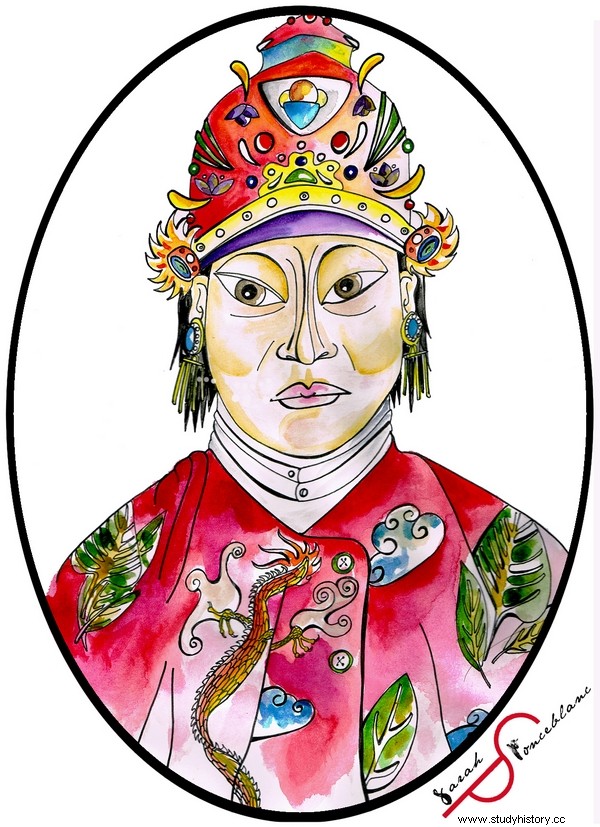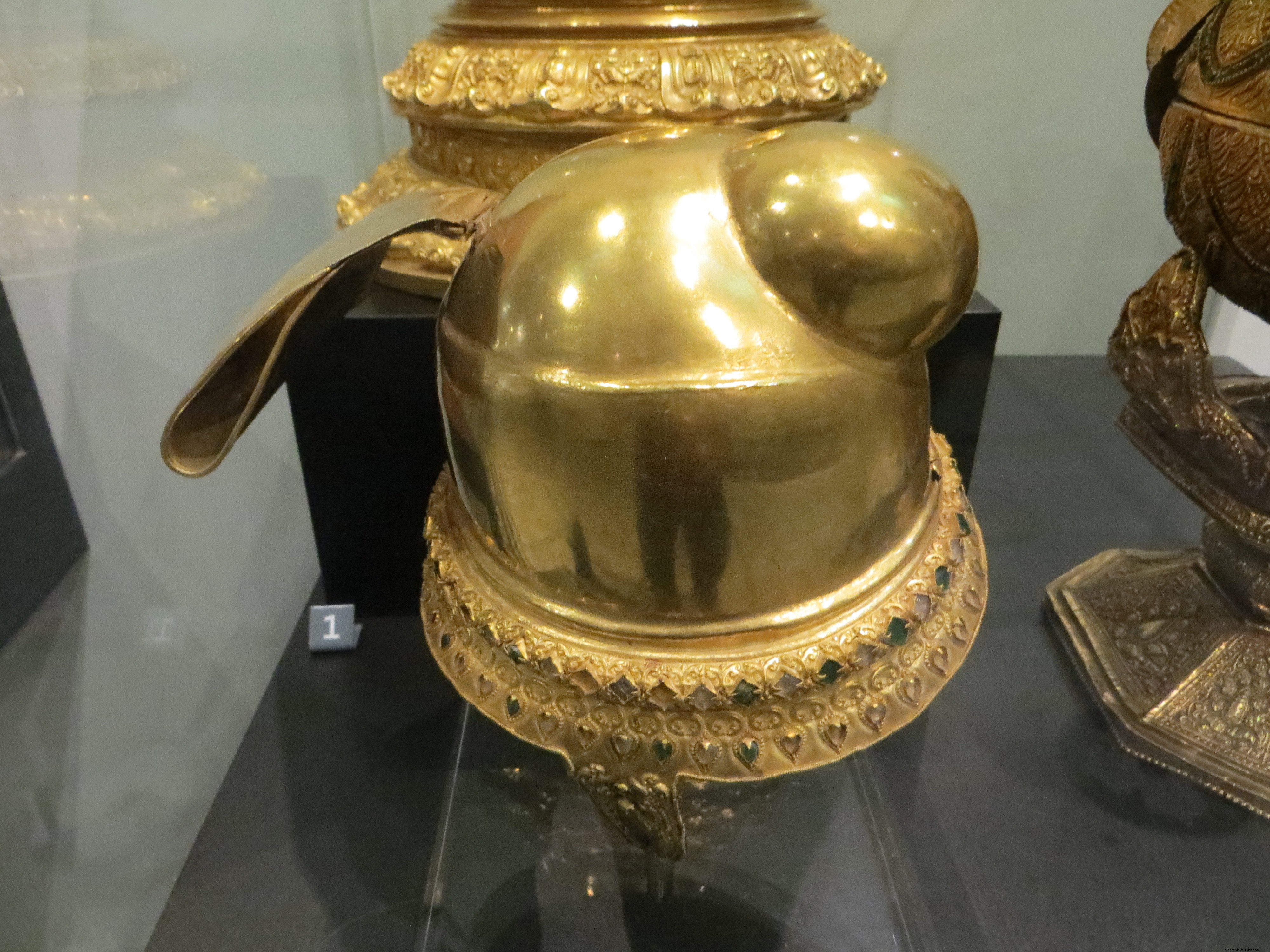Shin Sawbu (1394–1472), also known as Binnya Thau (Old Queen) reigned in the 15th century over the kingdom of Hanthawaddy (Lower Burma) was one of the few sovereigns to have acceded to the throne in the Indochinese peninsula.
Queen of the monastery

Born in Pégou in 1394, Shin Sawbu is one of the children of the king of the Mon people Razadarit and his wife the principal queen Thuddhamaya. She is called Viharadevi ("queen of the monastery").
At 20, Shin Sawbu is married to her father's nephew, Binnya Bwe. The couple would have three children, Binnya Waru, Netaka Taw and Netaka Thin, before Shin Sawbu was widowed at age 25.
Razadarit died in 1422 and his son Binnya Dhammaraza acceded to the throne. The succession degenerates into a quarrel and two younger brothers, Binnya Ran and Binnya Kyan, revolt with the support of the king of Ava Thihathu. To put an end to the revolt, Binnya Dhammaraza made Binnya Ran his heir and gave his sister Shin Sawbu in marriage to Thihathu.
This new marriage did not last longer than the previous one:Thihathu, very attached to his wife, died in 1426 during an expedition. Shin Sawbu spent a few more years in Ava before escaping in 1430 to return to Pégou.
Queen of Hanthawaddy

During the following years, the royal family of the kingdom of Hanthawaddy knows a succession of natural deaths and assassinations which end up getting the better of all the male heirs of Razadarit. After the death of his brothers and nephews, Shin Sawbu acceded to the throne in November 1453.
After a seven-year reign as a builder, Shin Sawbu decided to live a life of devotion and abdicated in 1460. For her succession, she chose the monk Pitakahara whom she met in Ava and who helped her escape. Then she moved to Dagon, near the Shwedagon Pagoda, the first religious center in Burma.
In Dagon, Shin Sawbu continues to wear the crown and dedicates himself to Shwegadon Pagoda. She carried out improvement and development works there, widening the platform, reinforcing the enclosure and covering the central stupa (architectural structure) with gold leaf.
Shin Sawbu remained in Dagon until his death in 1472. His alliance with the king of Ava Thihathu opened a long period of peace between their two kingdoms.
